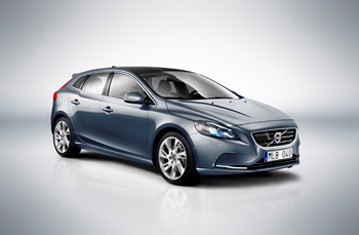Find more information in the General Comments section of the assessment
Find more information in the Rating Validity tab of the assessment
- See More
- See More
- See More
- See More
- Good
- Adequate
- Marginal
- Weak
- Poor
 Passenger
Passenger
 Driver
Driver
 Front Seat
Front Seat
 Car
Car
 Pole
Pole
- Good
- Adequate
- Marginal
- Weak
- Poor


Passenger
outboard
center
Fitted to the vehicle as standard
Not fitted to the test vehicle but available as option
Not Available
Both child dummies were sat in rearward-facing, Volvo-branded child restraints. In the side impact, both dummies were properly contained by the shells of their restraints, minimising the risk of contact with parts of the car interior. The passenger airbag can be disabled by a Volvo dealer to allow a rearward-facing restraint to be used in that seating position. Alternatively, an airbag switch is available as an option, with clear information being provided to the driver about the status of the airbag. The dangers of using a rearward-facing restraint in the passenger seat without first disabling the airbag are clearly explained in the car.
- Good
- Adequate
- Marginal
- Weak
- Poor

Head Impact 24.0 Pts
Pelvis Impact 2.0 Pts
Leg Impact 5.8 Pts
The V40 is equipped with an under-bonnet airbag system. This detects when a pedestrian has been struck and lifts the bonnet to provide greater protection to the head. The airbag also covers the windscreen pillars to provide better protection in those areas. Volvo demonstrated that the system would operate over a range of speeds and would detect different pedestrian statures. The system worked well, the bonnet offering good protection in all areas likely to be struck by a pedestrian's head, making the V40 the first car to score maximum points in this area. The front edge of the bonnet provided poor protection in most areas tested while the bumper was predominantly good. The V40 is equipped with a pedestrian-detection AEB system as an option. This system applies the brakes independently of the driver if a pedestrian is likely to be struck by the car.
- Good
- Adequate
- Marginal
- Weak
- Poor
| System Name | DSTC | |
| Performance | ||
| Vehicle Yaw Rate @ COS + 1.00 s | 1.04% | meets ECE requirements |
| Vehicle Yaw Rate @ COS + 1.75 s | 1.38% | meets ECE requirements |
| Lateral Displacement @ BOS + 1.07 s | 3.12 m | meets ECE requirements |
| Applies To | All seats | ||
| Warning | Driver Seat | Front Passenger(s) | Rear Passenger(s) |
| Visual | |||
| Audible | |||
|
|||
Electronic stability control is standard equipment on the V40 and met Euro NCAP's test requirements. A driver-set speed limitation device is also standard and was rewarded. A seatbelt reminder system is standard for the driver, passenger and rear seats.
- Specifications
- Safety Equipment
- Videos
- Advanced Rewards
- Rating Validity
Specifications
Tested Model Volvo V40 1.6 diesel 'Kinetic', LHD
Body Type - 5 door estate
Year Of Publication 2012
Kerb Weight 1377kg
VIN From Which Rating Applies - applies to all V40s of the specification tested
Class Small Family Car
Safety Equipment
Note: Other equipment may be available on the vehicle but was not considered in the test year.
Fitted to the vehicle as standard
Fitted to the vehicle as option
Not fitted to the test vehicle but available as option
Not Available
Not Applicable
Videos
Advanced Rewards
Rating Validity








Find more information in the General Comments section of the assessment
 Share
Share










The passenger compartment remained stable in the frontal impact. Dummy readings in the frontal test indicated good protection of the knees and femurs of the front seat occupants. Volvo showed that a similar level of protection would be provided for occupants of different sizes and to those sat in different positions. In the side barrier impact, good protection was provided to all body areas and the car scored maximum points. Even in the more severe side pole test, maximum points were scored. The seat and head restraint provided good protection against whiplash injury in the event of a rear-end collision.